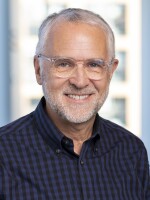MARY LOUISE KELLY, HOST:
President Trump spoke about the mass shooting in Texas during a press conference with Japan's prime minister. The next stop on the president's 12-day Asia tour is South Korea, where he'll visit Camp Humphreys. That's the largest American military base outside the U.S.
Under pressure from South Korea's government, U.S. forces are consolidating there, moving away not only from the border with North Korea but away from the capital, Seoul, as well. NPR's David Welna has the story from Seoul.
DAVID WELNA, BYLINE: Here at the Yongsan U.S. Army garrison in Seoul, this entire sprawling base is to become a huge park comparable to New York City's Central Park. But many of the buildings will remain reminders of the military forces that have been here. More than a third of Yongsan's 600 buildings were built by Japan. Its army occupied this base in the heart of Seoul for decades until the Americans took it over at the end of World War II.
(SOUNDBITE OF ARCHIVED RECORDING)
UNIDENTIFIED MAN: Katchi Kapshida.
UNIDENTIFIED MILITARY PERSONNEL: We go together.
WELNA: Katchi Kapshida - Korean for we go together - salutes the close collaboration between U.S. and South Korean forces. This welcome by troops at Yongsan was for Defense Secretary Jim Mattis when he stopped here in advance of President Trump's visit. Mattis reminded them of the threat from North Korea's artillery.
(SOUNDBITE OF ARCHIVED RECORDING)
JAMES MATTIS: Right now, as you know, we're within the range of their fire.
WELNA: Mattis said nothing, though, about the American exodus now underway at Yongsan. That departure was actually agreed to under another Republican president.
(SOUNDBITE OF ARCHIVED RECORDING)
VICTOR BERLUS: ...Commander in chief, the Present United States of America George W. Bush.
(CHEERING)
WELNA: At a town hall meeting here near the end of his presidency, Bush hailed his administration's agreement with South Korea to scale back the ubiquitous presence of U.S. forces and to vacate the Yongsan Garrison.
(SOUNDBITE OF ARCHIVED RECORDING)
GEORGE W. BUSH: We're closing unneeded installations, and we're going return this valuable land right here to the Korean people. See, this is a nice piece of real estate, as I'm sure you know.
(LAUGHTER)
WELNA: Even though it's been headquarters for U.S. forces, South Korea wanted Yongsan back. Bruce Bennett is a senior defense analyst at the RAND Corporation. He's been following the gradual American decampment from Yongsan.
BRUCE BENNETT: The South Koreans were anxious to reclaim that property. It had been a Japanese military base during World War II, and they were also anxious to get rid of the sense that that ought to be a place for military forces in the very middle of their capital.
WELNA: Seoul could still be hit by North Korea's massive artillery arrayed along the border, which is why Bennett says former Defense Secretary Donald Rumsfeld agreed to relocating U.S. troops south of Seoul.
BENNETT: His objective was to move the forces outside the range of North Korean artillery. In fact, he argued that he would be irresponsible if he didn't do that.
WELNA: That was long ago. Army Sergeant Mark Kaufmann was posted to Yongsan in September. He knows about a move to Camp Humphreys, 55 miles to the south.
MARK KAUFMANN: And it's taking a lot longer than people expect. But eventually - are all going transform down to Humphreys.
(SOUNDBITE OF U.S. ARMY VIDEO)
UNIDENTIFIED WOMAN: Welcome to Camp Humphreys. We think you'll enjoy living and working on the Army's newest installation.
WELNA: This U.S. Army video showcases the $11 billion expansion of Camp Humphreys, most of it paid for by South Korea. When the Eighth Army, the backbone of U.S. forces in Korea, moved from Yongsan to Camp Humphreys last summer, its commander, Lieutenant General Thomas Vandal, hailed the concentration of U.S. forces there.
(SOUNDBITE OF ARCHIVED RECORDING)
THOMAS VANDAL: What has changed for us is, we no longer have to defend potentially 173 camps and installations. We now have it consolidated, so it allows us to maximize our force protection.
WELNA: And it's not just North Korea's nuclear weapons threatening troops there. In the 13 years since this move was first agreed to, North Korea has tripled its artillery range, and Camp Humphreys is now well within striking distance. David Welna, NPR News, at the Yongsan Garrison in Seoul.
(SOUNDBITE OF LANDSDELAR'S "EDAMAME") Transcript provided by NPR, Copyright NPR.


